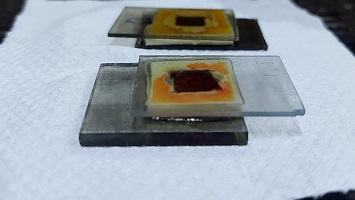The Modular Thin Film Fab Laboratory of the university’s Physics department has paved the way for the innovative method that opens up the feasibility for industries to move towards lead-free, eco-friendly cells.
The research, published by the peer-reviewed scientific journal Optical Materials brought out by Elsevier, was led by Associate Professor R. Jayakrishnan and included researchers Adithya Nath R., Aruna Raj, Jishad A. Salam, and Akhil M. Anand
The lead author points out that laboratory-scale methyl ammonium lead bromide-based perovskite solar cells currently have an efficiency of 25.3%, which is much ahead of the silicon solar cells available in the market that have reported efficiencies ranging from 18% to 20%.
Perovskite solar cells (PSC) are known to be potentially cost-effective and highly efficient in thin film photovoltaic technology.
“The presence of lead in PSCs, however, makes them unattractive for the market. Lead, being an environmental pollutant with high toxicity and bioaccumulation, ranks first in the list of hazardous substances. Lead contamination during production and disposal of traditional lead-halide perovskites have remained a concern since its entry into the human body through the food chain could cause irreparable health effects,” Prof. Jayakrishnan points out.
Currently, lead is an integral constituent in photovoltaic installations, mobile phones, and all electronic components since there is no substitute for soldering purposes. Studies show that by 2050, enormous amounts of lead (approximately 30 tonnes) and cadmium (2.9 tonnes) will be released into the environment from crystalline and thin-film solar panels respectively.
The research group has optimized an emulsion-based technique wherein they have adopted the room temperature processing technique to replace lead with copper in the methyl ammonium lead bromide perovskite material. As a result, they have reduced the use of lead in the starting material by 50% for the development of the photodiode, the resultant product, which is more photosensitive than those made without copper substitutes in the perovskite material.








